22 June 1941 of the Year and Tehran-43. Part of 2
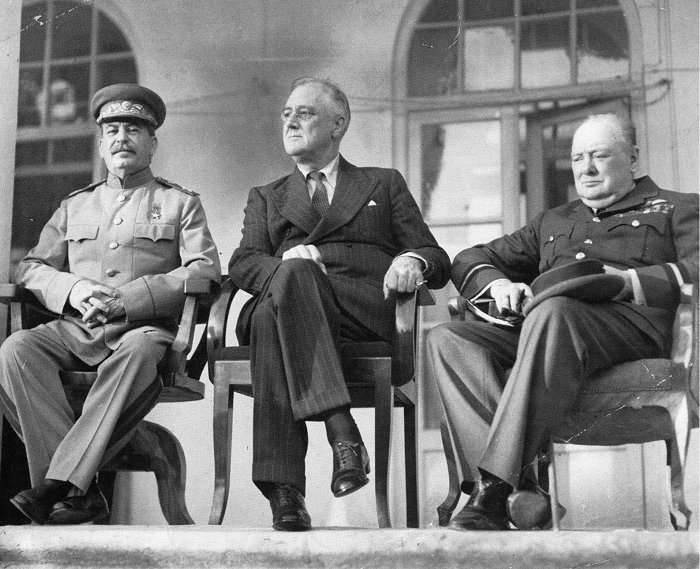
Upon arrival at the quartering site during the analysis of the exercise, it was said that the regiment as part of other units and divisions ensured the safety of the Tehran Conference. In case of unforeseen circumstances, he had to be prepared with the help of weapons ensure the safety of forum participants. The conference took place from November 28 to December 1 on 1943.
In November, 2016 will mark 73, from the date of the Tehran Conference. For the first time, the leaders of the USSR, America and England met in Tehran for the practical solution of very important problems of that time and, above all, the issue of opening a second front. Roosevelt and Churchill, with the beginning of the attack of Hitler's Germany on the Soviet Union, announced their decision to render assistance to the Red Army by lend-leasing military equipment, food and uniforms. There were three supply routes: the northern convoys from England to our northern ports, the ports of the Far East - the center and through Iran. At the same time, the Allies promised to open a second front in 1942. However, 1942 passed the year, ended with 1943, and the promised second front was not open. This worried the leadership of our country.
Through diplomatic channels, negotiations began on the need for a meeting between Stalin, Roosevelt and Churchill. It was carried out the most difficult work of diplomats. In the course of discussion, defending their interests and positions on the proposal of Stalin, it was decided to hold a conference in the city of Tehran. Although Churchill and Roosevelt offered Cairo, Baghdad, Basra. But Stalin insisted on Tehran, explaining this by the need to be closer to the headquarters and the possibility of directing the operations of the Red Army on all fronts.
There were no regular forces of the anti-Hitler coalition in Tehran itself and its immediate vicinity.
Hitler's intelligence was informed about the conference itself. Hitler ordered in any way and method to capture or destroy all the heads of state of the anti-Hitler coalition.
Soviet intelligence officer Nikolai Kuznetsov, working under German cover in the rear, sent the encryption to Moscow first, in which he told about the impending assassination attempt on members of the troika. It is Nikolai Kuznetsov who needs to be grateful for this one more feat of his.
The message of Kuznetsov was brought to the attention of the head of the Soviet residency in Tehran, Ivan Agayants.
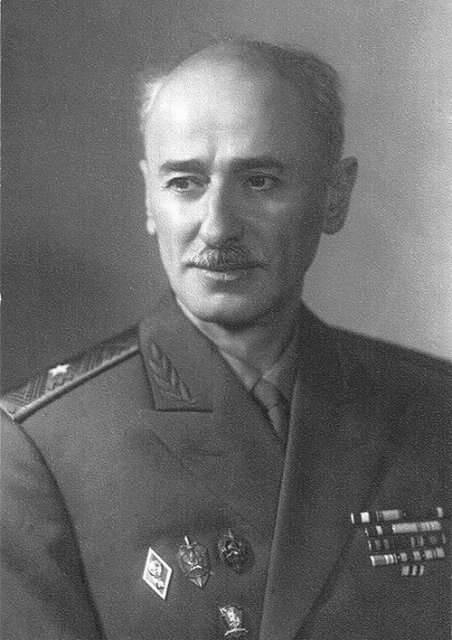
The organizer and leader of the operation, codenamed “Long Jump,” was appointed the well-known organizer of sabotage and abduction of dignitaries Otto Skorzeny. From the SS archive: “Otto Skorzeny is the head of the SS secret service in the sixth section of the General Directorate of Imperial Security. Nickname "Scarface Man".
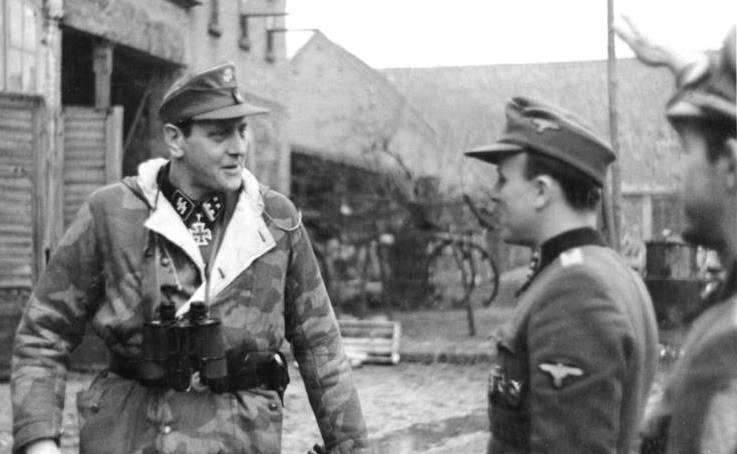
Several German commando groups were parachuted into Iran. Skorzeny hoped to penetrate the Soviet embassy along with a group of saboteurs. Otto decided to collect the best. It must be said that the Germans were great specialists in creating mobile commando teams capable of performing a variety of actions.
To understand the situation in this eastern country, you need to imagine for a moment a monstrous mixture of poverty and wealth. Since the beginning of World War II, a flood of refugees from Europe has poured into Tehran. Many wealthy Europeans were able to transfer their capital to the Middle East, which allowed them to lead a normal life even in the most scanty years. The Tehran market impressed with wealth, variety of goods and contrasts. Luxury limousines on the streets were commonplace, expensive restaurants were adjacent to poor neighborhoods. It was easy to get lost in such a motley crowd, which was actively used by the Abwehr officers. In the Iranian capital was an endless war of intelligence. Soviet intelligence worked very seriously in Iran. Land-lizovskie materials and food, equipment, equipment were delivered through Iran. Back in 1939, the Soviet intelligence service intensified its activities in this country: the war with the Hitler underground was the most brutal. The scale of this confrontation was evidenced by the paintings of that time: shots sounded often at night in the Iranian capital. Employees of the Soviet agents, identifying the enemy agent, shot him on the spot. Approximately 20 000 German refugees lived in Tehran and, of course, this environment allowed for the introduction of agents. Indeed, in Iran there were representations of embassies of all major powers, through which it was possible to probe the soil, recruit embassy staff to get the necessary documents.
Soviet intelligence and counterintelligence services effectively organized work aimed at ensuring the full safety of the conference participants.
Gevork Vartanyan, our fellow countryman, a Rostov citizen and foreign intelligence officer, was also involved in the capture of an experienced German intelligence agent.
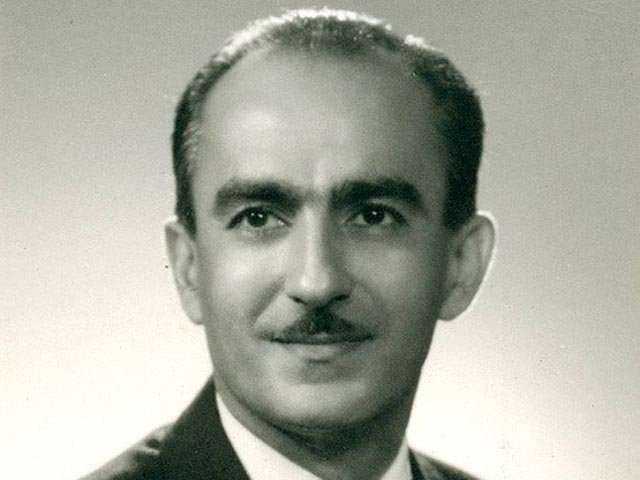
He is a Hero of the Soviet Union, an honorary resident of the city of Rostov-on-Don. In his honor, in 2012, a star was laid on Voroshilovsky Prospekt. Over the years, he repeatedly visited Rostov and met with Alexander Zakharovich. It is amazing how the fate of the two Rostovites intertwined: they learned about their joint participation in the Tehran-43 operation only after many years.
So, Gevorg Vartanyan brought interesting and unexpected information to the head of the Soviet residency Agayantsu: a few days ago, Gevorg recognized his old acquaintance, the sturmbanführer SS Franz Meier, in the grave digger. The fact is that Mayer arrived in Tehran in October 1940 of the year, has a characteristic sign - there is no ring finger on his left hand. He was the organizer of major sabotage on the Trans-Iranian highway, as well as the killing of Soviet agents in Iranian government circles. Mayer was an extraordinary intelligence agent, a fanatic of national socialism, he did everything to fascism defeated at every turn. The appearance of such a scout at the time of the preparation of the meeting in Tehran was a very disturbing call. He was recognized by Gevork Vartanyan, who works under the operational pseudonym "Amir". He was the son of a professional intelligence officer Andrei Vartanian, who has been in Iran for a long time with a special assignment.
Meier was disarmed.
Also, the places of landing of saboteurs-paratroopers, routes of movement and places of their concentration were identified. In Tehran alone, more than 500 people were arrested.
Some of them were turned over and worked under the cover in the interests of the Soviet side.
Hitler, having learned about the complete failure of the operation "Long Jump", canceled its continuation.
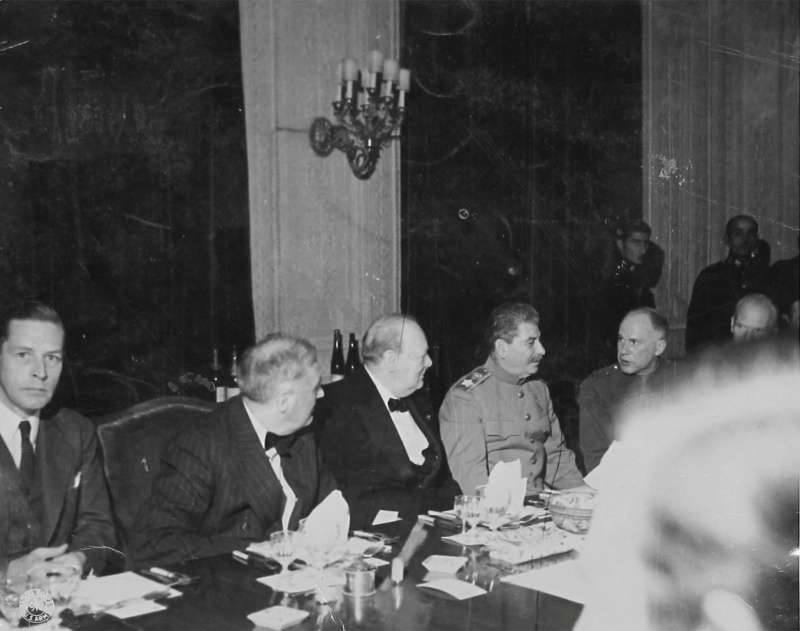
The conference was held on the territory of the Soviet embassy in difficult conditions. “After a long debate, the Overlord problem was stumped. Then Stalin rose from his chair and, turning to Voroshilov and Molotov, said with irritation: “We have too much to do at home to waste time here. Nothing good, as I see it, does not work. ” The critical moment has come. Churchill understood this and, fearing that the conference might be disrupted, made a compromise. ” This writes the historian Oleg Rakhmanin.
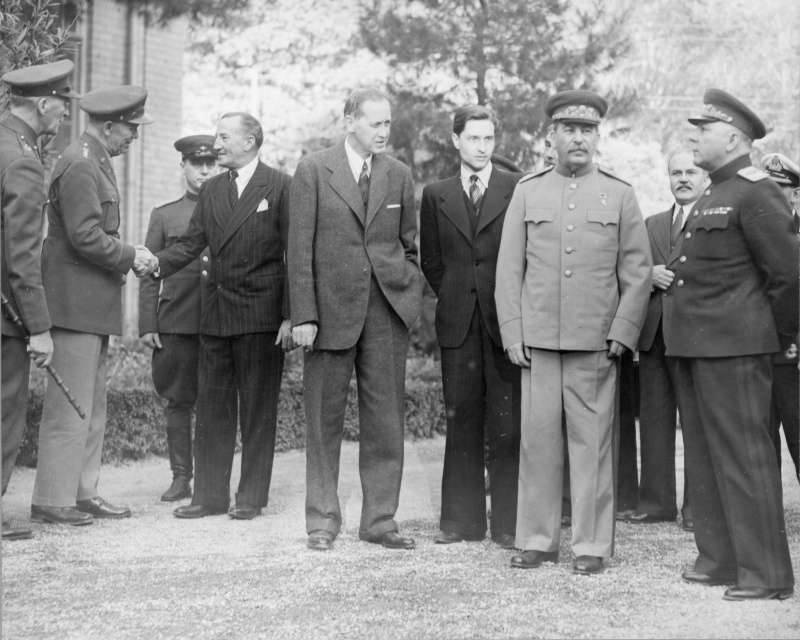
Stalin late in the evening 1 December flew to Moscow. It is noteworthy that Stalin flew to the conference for the first time in his life, and back to Moscow. Although many military historians say that the leader was traveling by train. However, Alexander Zakharovich told about the flight of the generalissimo.
The second front was opened 6 June 1944 of the year.
Military registry office
As a result of ensuring the safety of the participants in the Tehran Conference, many Soviet soldiers were awarded with medals and orders. Alexander Zakharovich got leave home. He came to Rostov, came to his bride, Leah, and proposed to her. She agreed, and 8 June 1944 of the year they played a modest wedding. Their marriage was registered in the registry office of the Ordzhonikidze district of the city of Rostov-on-Don.
“It was loudly said - the registry office. He was in a dilapidated building, where only one room was whole and where one worker sat, ”recalls Alexander Zakharovich.
Vacation time flew by instantly. But these moments forever crashed into the memory of the front-line soldier. He was particularly struck by the news of the concentration camp set up on the site of the former artillery school, where he studied before the war. “The monstrous conditions of existence were created there, the Germans did everything to destroy people as much as possible,” he says.
He returned to Iran again. There he found the news of the end of the war. It was a great joy. Joy with tears in his eyes. How many people died! In the first weeks of the war, Yakov Agranovsky, who once introduced Alexander Zakharovich to his future wife, Leah, died. Almost all the classmates of Alexander Zakharovich, his friends in the artillery school, and those with whom he began his service in Moldova, died in battle. His grandparents died in the city of Georgievsk.
Their division as part of other parts was in northern Iran for several months. The Soviet leadership feared possible aggression from Turkey, which repeatedly organized provocations in the northern Iranian region, but did not dare to begin active aggression.
In the summer of 1946, the 313 th Mountain Rifle Regiment returned to its homeland, to Makhachkala, and was soon disbanded. However, Soviet military advisers and a consolidated military unit remained in Iran.
Alexander Zakharovich received a new appointment - to arrive in Port Ilyich commander of a separate heavy artillery division. And by the end of the year he was transferred to Lenkoran, then to Stepanakert. “There, where now there is a war, fighting,” says Alexander Zakharovich. “And it worries me a lot.”
In 1950, he returned to Rostov and headed the junior lieutenants' training courses at his native school (RAU).
In 1951, he is an artillery shooting instructor.
In 1951-1972, he continued to work at his native school. The names of the latter began to change: it was the military unit number XXUMX, RVRU, RVKIU, RVVU, RVVKU, RVVKIU, RVVKIURV, RVIRV, Rocket Institute RV strategic purpose, Rostov branch of the Rocket Academy named after Peter the Great. His ranks also varied: senior officer of the combatant department, student of higher engineering and technical courses, head of the school's regime, chief of staff of the combat training support division, commander of the combat training support division, chief of the technical war base.
In 1966, he was given the rank of lieutenant colonel, and in 1970, the colonel. And in 1972, Alexander Zakharovich Karpenko was dismissed.
He gave the army 33 of the year, 3 of the month and 1 day.
But Alexander Zakharovich did not want to lie on the sofa and watch TV. He began working as a director of the Dynamo Sports House. There were a lot of sports sections then, and they were all free. Any boy could come and play sports. The only requirement from coaches is the absence of twos in the diary.
As a long-term member of the Patriot club, Colonel Alexander Zakharovich Karpenko met regularly with schoolchildren №25, №27 named after Suvorov, №82 named after 25 of the Chapayev Division and cadets-rocket men.
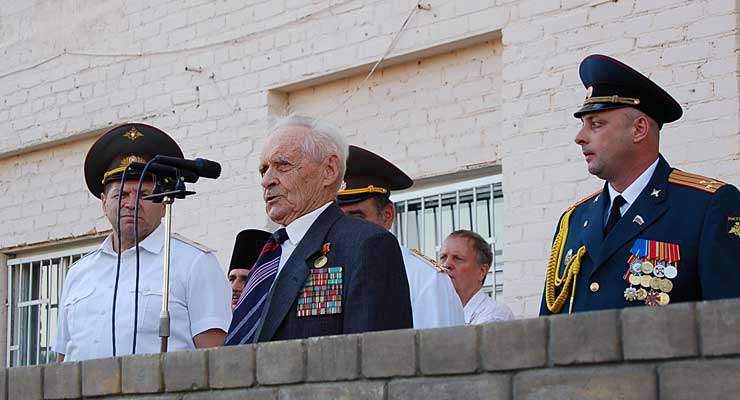
Today he is 95 years old. He still finds the strength to cross the street to the familiar school No. 25 and perform on 9 May in front of schoolchildren. And also amazing - he writes poetry. He still remains, thus, in the ranks, in the poetic ranks.
I ask him to present poems for publication. With a trembling hand, he rewrites wonderful lines for me on an ordinary piece of paper into a cell. Here they are:
We must tell the truth about war and victory!
Someone somewhere in the past told a lie
Someone, somewhere wrong untruth added
And nonsense flies over the country,
И history the invention rules.
Few who survived the war
Even fewer soldiers and soldiers left.
Who is this one, who insulted them?
And over their memory abused?
Fat cats, thieves, swindlers,
That in the twentieth, thirtieth grandfathers created
In an instant, turned into loot
And in distant countries fled.
And whine over the story there
In one choir, who stayed here.
Punish them with the punishment of heaven
From the answer will not succeed.
You, the soldier did everything under his power.
Merz in the trenches, went on the attack.
And far back now forty-fifth
Eternal glory for centuries deserved.
The memory of the fallen is sacred for all of us,
Who died - they all wanted to live
But it happened the way it happened.
Feat they have no right to forget.
It's hard for us to win
Против tanks walk with a grenade,
And in a united burst
Brotherhood strong enemy to win.
Someone did not live to see Victory for a moment,
Someone only fought a day,
Someone marched on Red Square minted pavement,
He celebrated Victory in Moscow.
I now, without referring to old age,
I would give in the face that is lying.
And before that little left.
We are not cattle, we are Russian people!
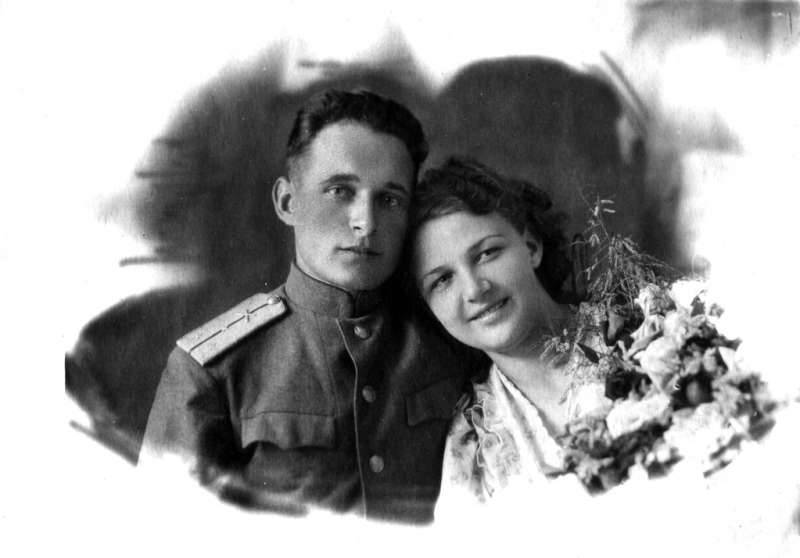
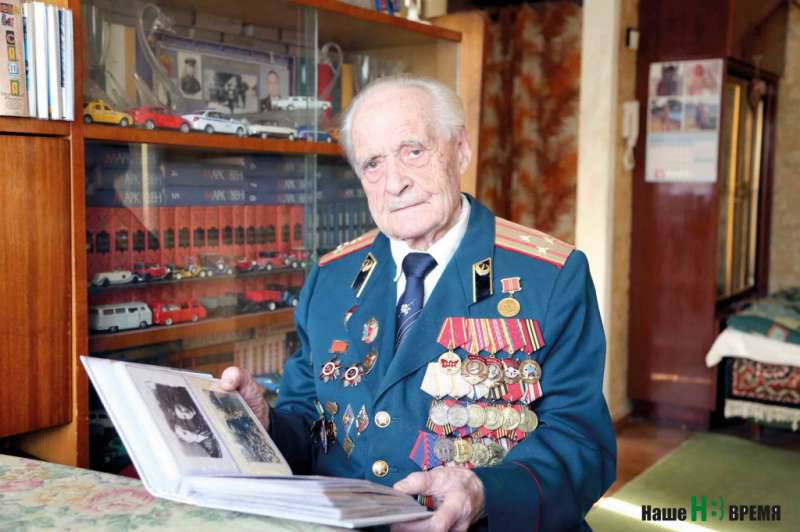
Information